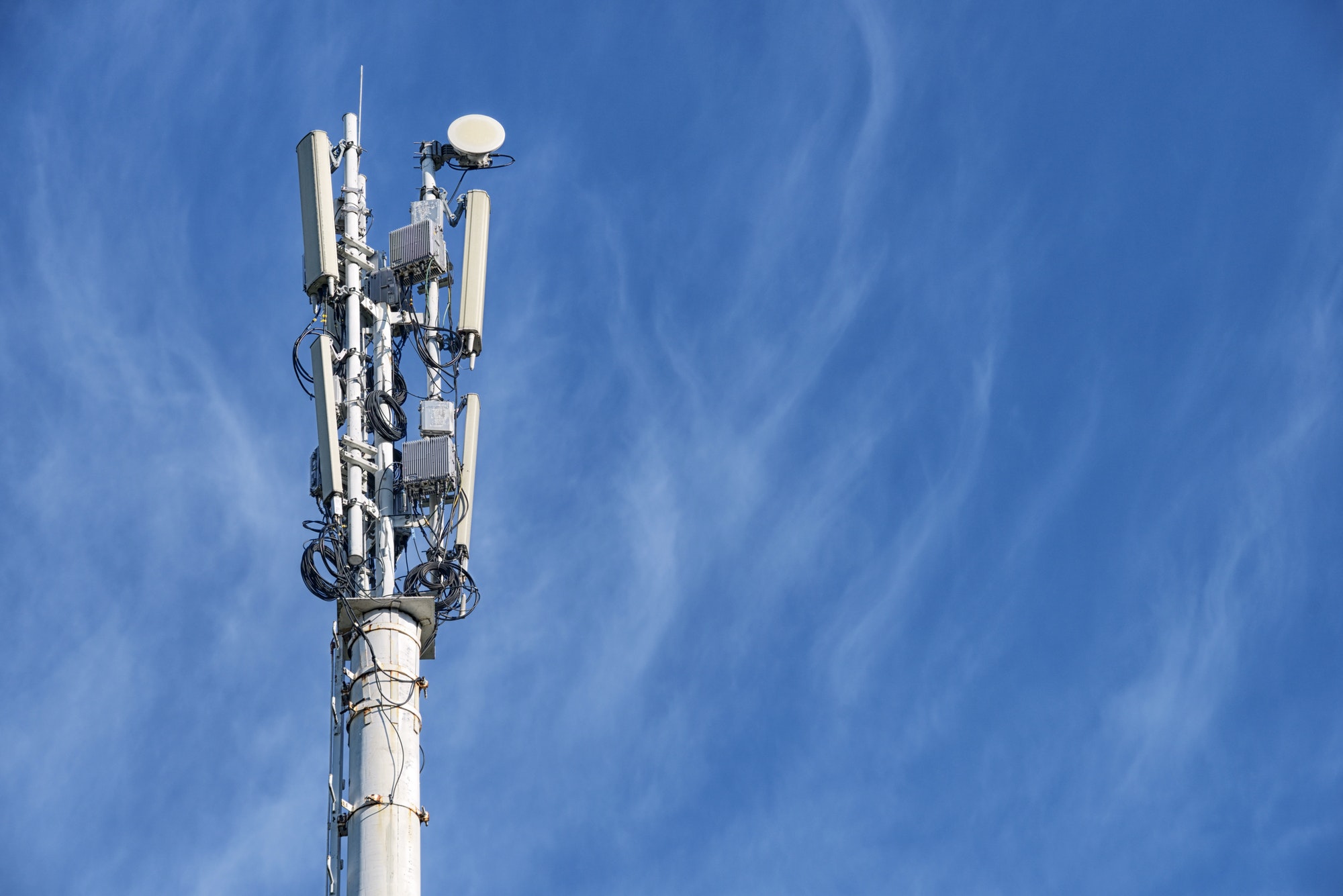As communications needs expand, the infrastructure supporting it becomes increasingly valuable. Cell towers, rooftop antennas, fiber hubs, data centers, small cells, and Distributed Antenna Systems (DAS) are often integrated into real estate in ways that can be easily overlooked by property owners and real estate professionals. However, recognizing these communications sites can open up lucrative opportunities, especially when you know a company like Wireless Equity Group, which actively acquires and manages these leases. By identifying these hidden assets, real estate professionals and property owners can unlock new revenue streams and add significant value to their properties.
Wireless Equity Group specializes in acquiring communications leases, making it easier for property owners to capitalize on existing wireless and digital communications infrastructure.

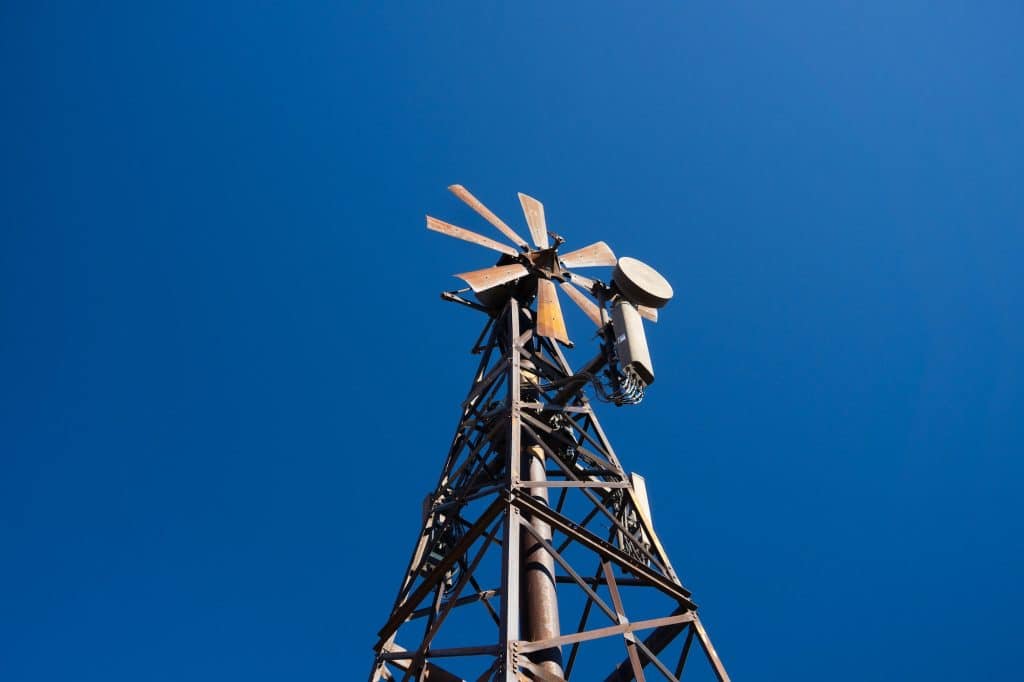

Contents
How to Identify Communications and Digital Infrastructure
In this guide, we’ll explore how to identify these often concealed communications sites and understand what Wireless Equity Group looks for in potential acquisitions. With this knowledge, real estate agents, property managers, and community members can make informed referrals, adding value to properties and benefiting from a high-growth industry that powers our connected world.
Communications leases are contracts that grant communications providers (such as AT&T, T-Mobile, Verizon, etc.) access to specific locations on a property for their equipment. There are several types of communications installations that can be found on different kinds of properties:
Cell Towers:
Cell towers are freestanding structures, either monopoles (single-pole towers) or lattice towers, designed to hold antenna arrays for broad coverage. They’re especially common in suburban and rural areas, where taller, standalone towers can extend network reach over larger distances.
- Identification Tips: These towers often stand alone in open spaces or along highways, typically surrounded by security fencing. Look for RF (radiofrequency) emission warning signs and equipment like backup generators and electrical meters.
- Camouflage: Some cell towers are disguised as trees, clock towers, or other structures to blend into the landscape, especially in residential or historic areas.

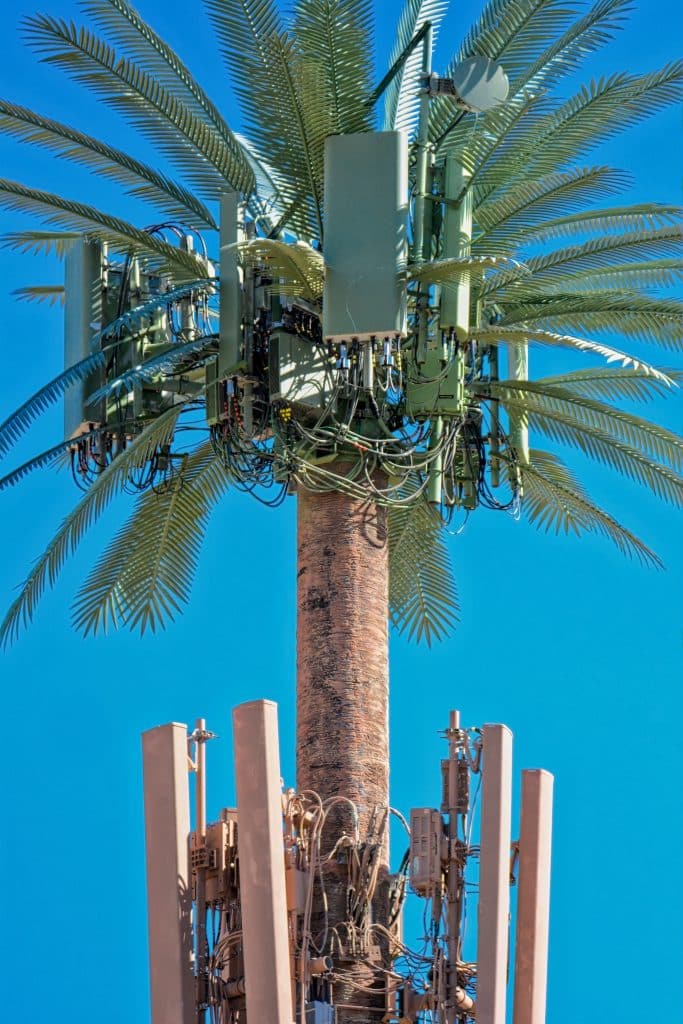
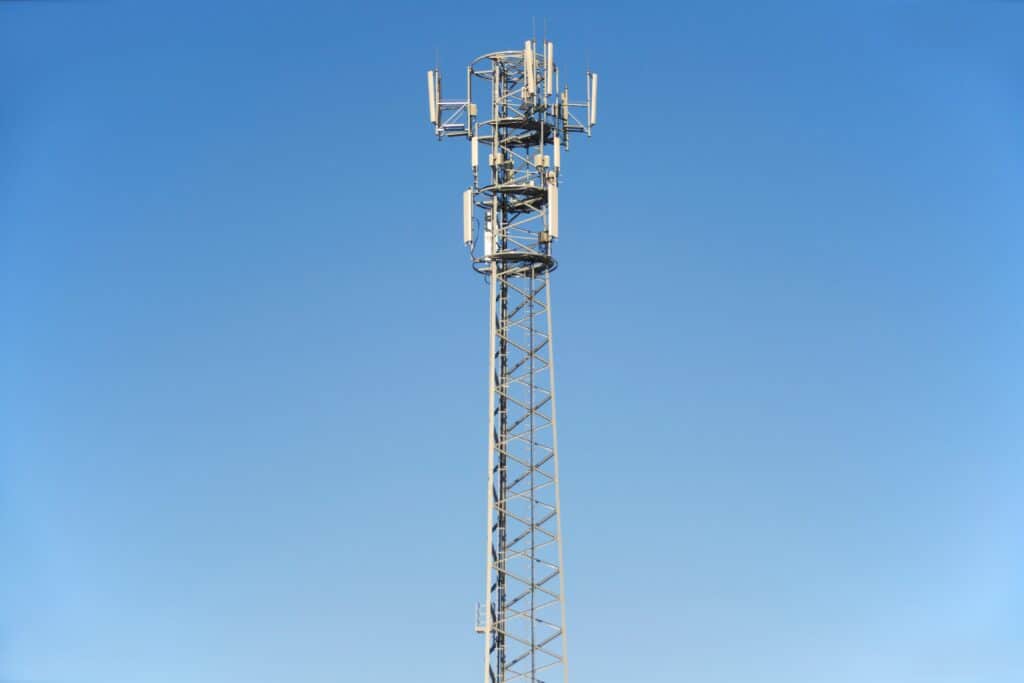

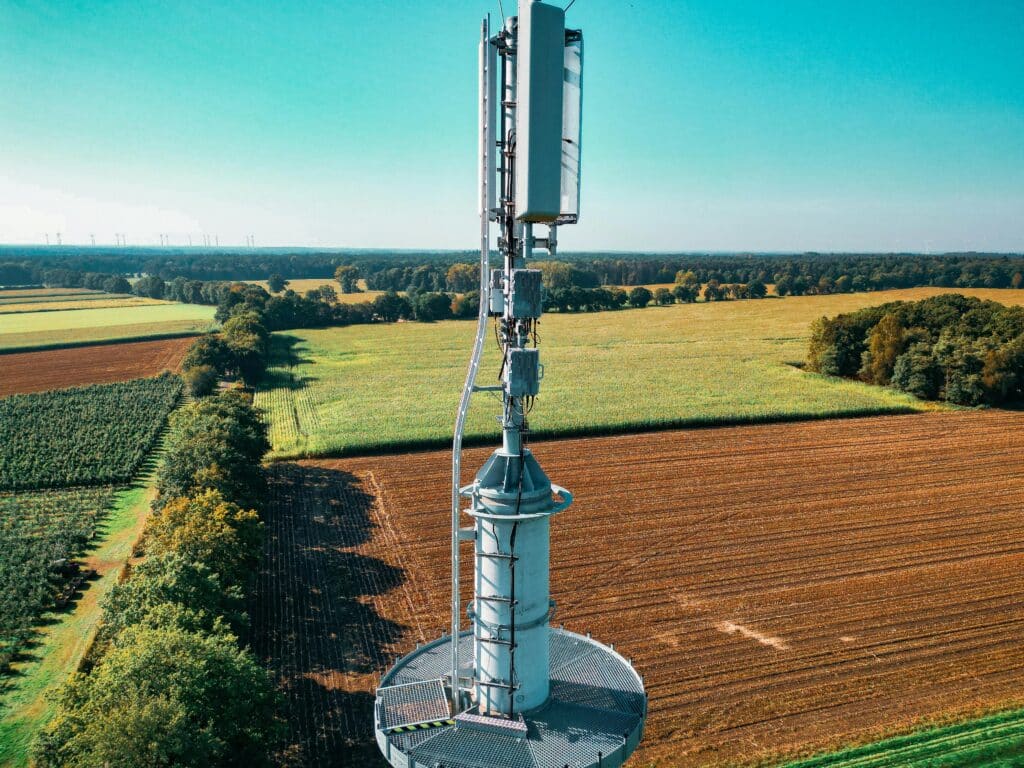



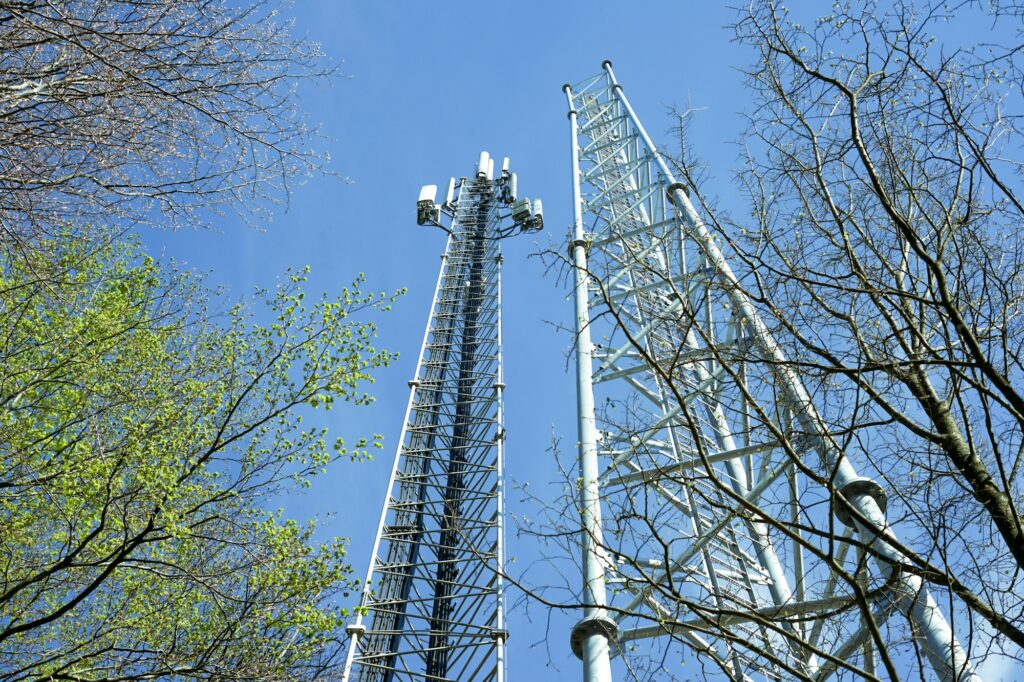
Rooftop Antennas:
Rooftop antennas are located on the rooftops of mid- to high-rise buildings, particularly in urban settings. They’re used to improve localized coverage by providing signal to the building and immediate surroundings.
- Identification Tips: Look for additional rooftop structures, like box-like enclosures, that don’t match standard HVAC or mechanical equipment. Rooftop antennas might be housed in shrouds that are painted to match the building’s exterior, and they often have visible wiring conduits and power sources running up the side of the building or on the roof.
- Camouflage: In some cases, rooftop antennas are housed in structures designed to blend in with the building’s architecture, such as extended facades or concealed equipment rooms.







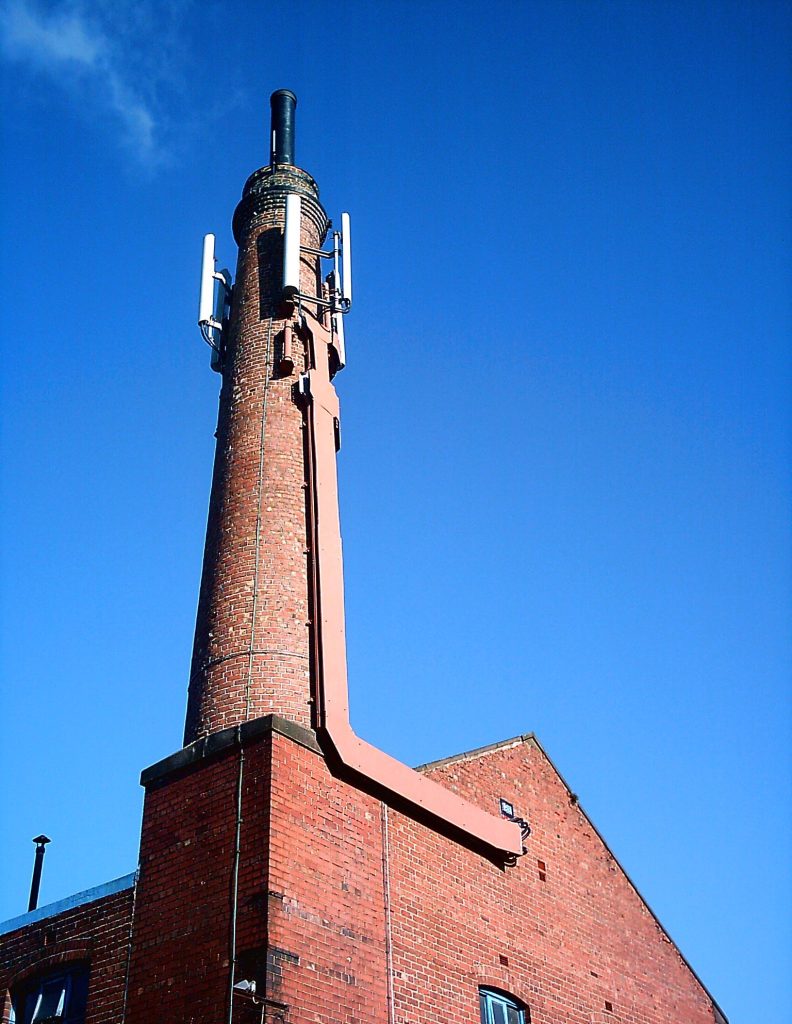

Small Cells:
Small cells are compact antennas that are deployed in urban and densely populated areas to meet high data demand. They’re often attached to street furniture (like street lights), utility poles, or the exteriors of buildings, providing enhanced coverage in targeted areas.
- Identification Tips: These antennas are much smaller than traditional cell towers and are often installed on poles or streetlights. Look for small boxes with antennas mounted on utility poles in city centers, near shopping districts, or in busy residential areas.
- Camouflage: Small cells are often painted or designed to match the poles or buildings they’re attached to, blending seamlessly with their surroundings.
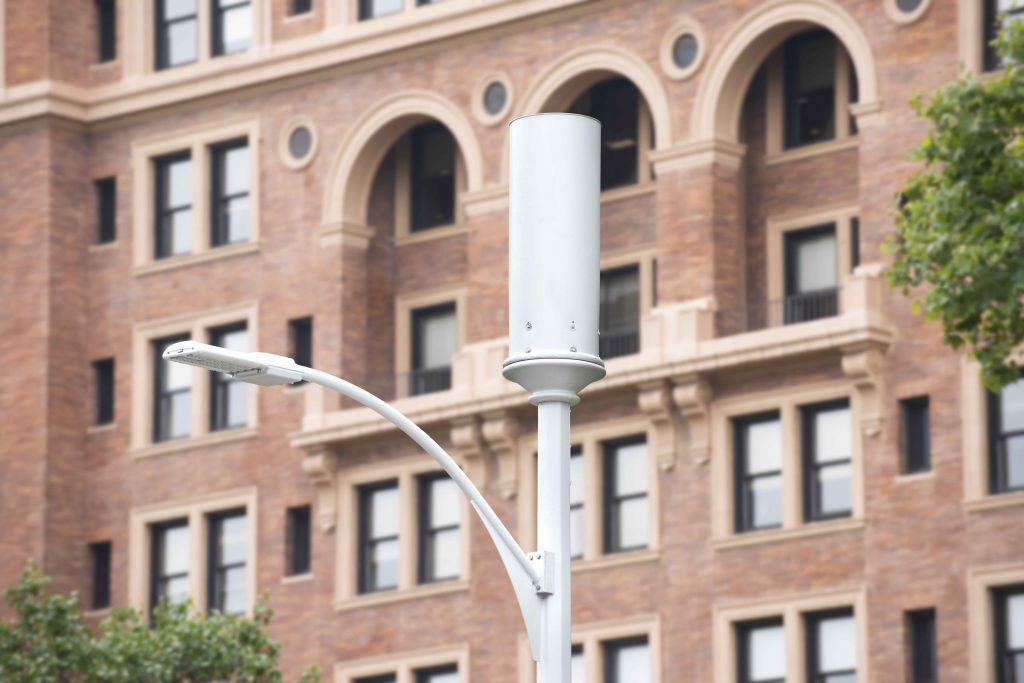
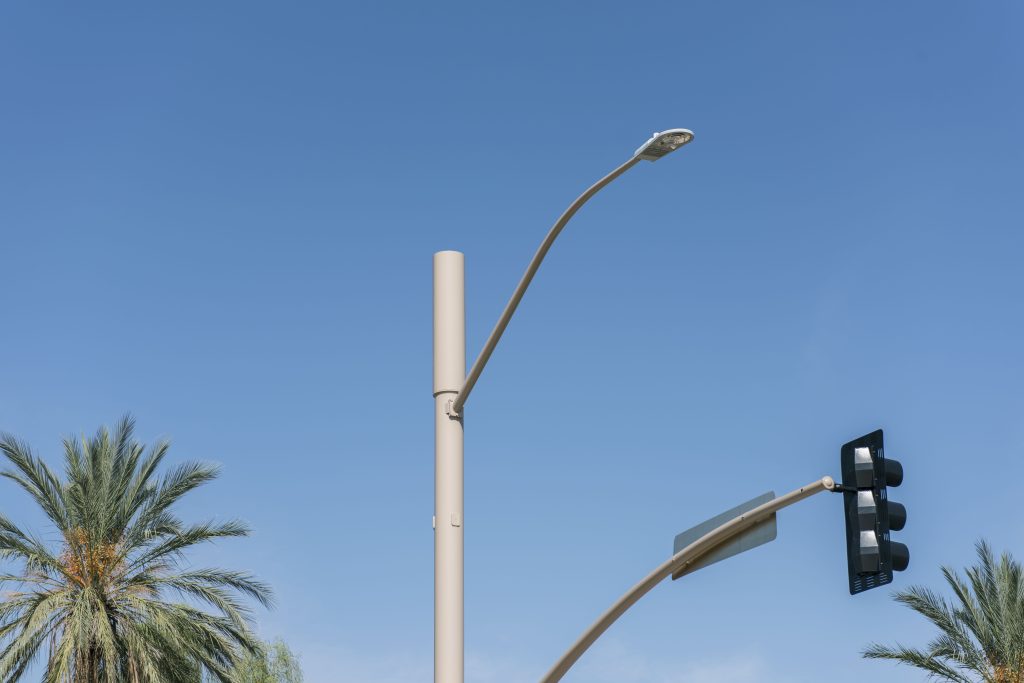
Other Communications Infrastructure:
In addition to visible antennas, there are other, harder-to-spot communications infrastructure leases. These installations often go unnoticed and might only be evident when reviewing the property’s rent roll. Recognizing these assets can reveal significant revenue opportunities and increase property value.
Data Centers:
Data centers are specialized facilities that house servers, storage systems, and network equipment, supporting cloud computing and data processing needs.
- Identification Tips: Data centers often appear in commercial or industrial buildings with robust security features (fencing, card access points, and surveillance). Look for large HVAC systems and backup power setups (like UPS systems or generators) to support continuous operation. Data centers are typically close to major fiber routes and power substations.
- Benefits: Data centers are in high demand due to the growth of digital applications. Leases with data centers provide long-term, stable income and increase property value.
Distributed Antenna Systems (DAS):
DAS is an indoor system with multiple small antennas that are distributed throughout a large building, such as a stadium, airport, or shopping mall, to ensure seamless coverage across multiple floors or large spaces.
- Identification Tips: DAS antennas are often mounted on ceilings or walls within buildings and may appear as small boxes or panels at regular intervals. Equipment rooms housing DAS controllers, cabling, and power supplies are usually tucked into basements or utility closets.
- Benefits: DAS is especially valuable in venues with high traffic where reliable connectivity is essential. For large property owners, DAS can be a significant source of lease income and is highly desirable to telecom providers.
Fiber Hubs:
Fiber infrastructure is essential for high-speed data transmission and is often installed underground, along utility poles, or within buildings to support broadband and telecommunications networks.
- Identification Tips: Fiber installations are less visually obvious than antennas or towers. Look for manholes with “fiber” markings in dense urban or commercial areas or signs of new trenching and conduit installations along property lines. Inside buildings, fiber infrastructure can be located in equipment rooms with marked distribution panels and cabling.
- Benefits: Fiber is a high-demand asset that enhances property value, as many telecom companies seek long-term access to these lines. While it’s not always visible, fiber can generate substantial lease revenue, especially in high-density regions.
Understanding how to spot communications infrastructure is essential for property owners, real estate agents, and community members who want to capitalize on potential telecom leases. Each type of installation brings unique value:
- Revenue Generation: Telecom leases provide consistent revenue streams for property owners through monthly or annual fees from telecom providers.
- Increased Property Value: Properties with active communications infrastructure can attract higher valuations, especially if they host multiple telecom installations or have potential for new leases.
- Future Investment Potential: Recognizing existing telecom assets can also help in marketing properties for additional telecom leases, as companies frequently seek out existing infrastructure to expand network coverage.
Wireless Equity Group’s Investment Criteria: What We Look For
Identifying a communications lease is just the first step. For those interested in referring these opportunities to Wireless Equity Group, understanding our acquisition criteria can help you assess potential sites. We prioritize leases based on the following key characteristics:
- Long-Term Lease Potential: We’re particularly interested in leases that offer long-term stability. Look for properties with established or renewable communications leases with major telecom providers.
- Prime Location: Sites in high-demand locations, such as urban centers or densely populated suburbs, are preferred as they support higher user density and network demand.
- Established Carriers: Leases with major carriers (such as AT&T, Verizon, T-Mobile) are especially desirable due to their stability and strong market presence.
- Minimal Property Encumbrances: Properties with minimal zoning or regulatory restrictions are attractive. Telecom equipment should not overly encumber the property’s use or impact its future development potential.
- Ease of Access: Sites that offer easy access for technicians and maintenance personnel are favored, as this reduces upkeep complexity and ensures long-term operability.
Wireless Equity Group is committed to transparent, fair, and efficient acquisitions, creating mutually beneficial partnerships with property owners and their agents. We provide streamlined services for evaluating and acquiring telecom leases, ensuring that all parties benefit from the transaction.
The Benefits of Working with Wireless Equity Group
Wireless Equity Group is dedicated to simplifying the complex process of telecom lease acquisitions for property owners, real estate agents, and community members. Here are some reasons to partner with us:
- Fast, Transparent Evaluation: We conduct detailed assessments quickly, giving you clear information and reducing transaction timelines.
- Fair Market Value Offers: Our team ensures you receive fair market value for telecom leases, offering a valuable return on referral investments.
- Comprehensive Support: We guide you through each step of the process, from initial contact to final acquisition, with dedicated professionals who understand the telecom real estate landscape.
- Ongoing Partnership Opportunities: We value long-term partnerships and offer continued support for those interested in bringing additional referrals.
By working with Wireless Equity Group, you gain a trusted partner in maximizing the value of telecommunications assets on properties. Our mission is to make these partnerships rewarding, beneficial, and straightforward for all parties involved.
How to Refer Communications Sites to Wireless Equity Group
Real estate agents, property owners, and community members can refer potential sites that meet our criteria. Here’s how the referral process works:
- Identify Potential Sites: Use the techniques in this guide to identify potential communications leases or telecom infrastructure on properties.
- Gather Basic Information: Basic property details, such as location, lease terms (if available), and the type of telecom equipment, can expedite the evaluation process. Even preliminary information, like the existence of antennas or DAS equipment, can be helpful.
- Reach Out to Wireless Equity Group: Visit our Acquisitions Page to find contact information and initiate a referral. Our team will conduct a thorough assessment to determine the property’s suitability for acquisition.
- Receive Compensation for Successful Referrals: Wireless Equity Group values strong partnerships and offers compensation for successful referrals that lead to acquisitions.

Turn Hidden Telecom Assets into Income Opportunities
Identifying communications sites like cell towers, rooftop antennas, and DAS systems on properties can unlock unique revenue opportunities. Real estate agents, property owners, and community members who refer these hidden assets to Wireless Equity Group can benefit from a fair and transparent acquisition process.
Our team is here to help you evaluate these sites and turn potential telecom leases into valuable investments. By using the techniques in this guide, you can develop a keen eye for spotting these assets and make well-informed referrals to Wireless Equity Group, tapping into a high-growth market that is crucial to today’s connected world.
For more information on our investment criteria or to initiate a referral, visit Wireless Equity Group’s Acquisitions Page. Start turning your expertise into income by helping us discover and acquire hidden telecom assets across communities.



